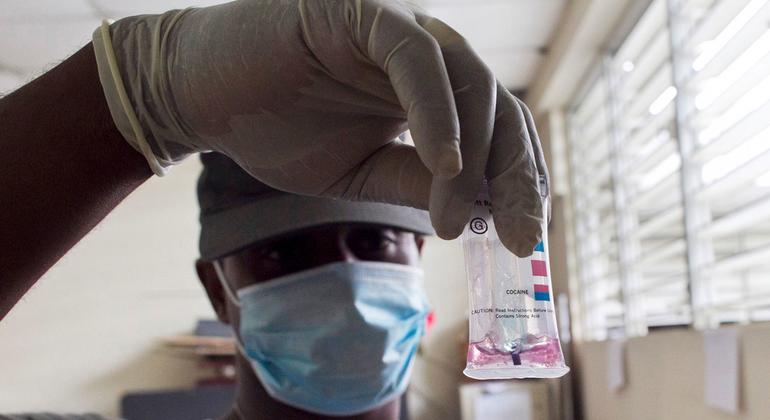The World Drug Day report highlights the increase in drug use and increased trafficking

TheInternational Day World Drug Day, or World Drug Day, is observed annually on 26 June and aims to promote action towards achieving a drug-free world.
This year’s campaign recognizes that thing “Effective drug policy must be rooted in science, research, and full respect for human rightscompassion and a deep understanding of the social, economic and health impacts of drug use.”
Ghada Waly, CEO of UNODCsaid there is a need to provide evidence-based treatment and support to all people affected by drug use, “while also targeting the illicit drug market and investing more on prevention.”
New threat from nitazene
Drug production, trafficking and use continue to exacerbate insecurity and inequality, and cause unpredictable harm to human health, safety and well-being.
— Ghada Waly
The UNODC report says that in the decade to 2022, the number of people using illegal drugs will increase to 292 million.
It notes that most users worldwide consume cannabis – 228 million people – while 60 million people worldwide consume opioids, 30 million use amphetamines, 23 million use cocaine and 20 million use use ecstasy.
Furthermore, UNODC found that there was an increase in overdose deaths following the introduction of nitazene – a class of synthetic opioids potentially more dangerous than fentanyl – in some high-income countries.
Trade in the Triangle
The drug report notes that traffickers in the Golden Triangle, a region in Southeast Asia, have found ways to integrate into other illegal markets, such as wildlife trafficking, fraud finance and illegal resource exploitation.
“Poor, displaced and migrant communities” bear the brunt of this instability and are sometimes forced to participate in opium cultivation or illegal resource exploitation to survive; This can lead to civilians becoming drug users or falling into debt with criminal groups.
Environmental consequences
These illegal crimes contribute to environmental degradation through deforestation, toxic waste dumping, and chemical pollution.
“Drug production, trafficking and use continue to exacerbate instability and inequality, while causing untold harm to health, safety and well-being,” said UNODC’s Ms. Waly. safety and happiness of the people”.

The potency of cannabis has quadrupled in some parts of the world over the past 24 years.
The Rise of Cocaine and the Legalization of Marijuana
In 2022, cocaine output reached a record high with 2,757 tonnes produced – a 20% increase compared to 2021.
The increase in supply and demand for the product has been accompanied by an increase in violence in countries along the supply chain, particularly in Ecuador and the Caribbean. There has also been a spike in health problems in some destination countries in Western and Central Europe.
Similarly, harmful cannabis use has increased as the product has been legalized across Canada, Uruguay and 27 jurisdictions in the United States, the majority of which are high in THC (delta9-tetrahydrocannabinol). – is believed to be the main ingredient behind the drug’s psychoactive effects.
This has led to an increase in the rate of suicide attempts among regular cannabis users in Canada and the US.
Hope for World Drug Day
The UNODC report emphasizes that “The right to health is an internationally recognized human right and belongs to everyoneregardless of a person’s drug use status or whether the person is imprisoned, detained or incarcerated.”
UNODC calls on governments, organizations and communities to work together to develop evidence-based plans to combat drug trafficking and organized crime.
The agency also hopes the community will assist in “strengthening resilience to drug use and promoting community-led solutions.”




